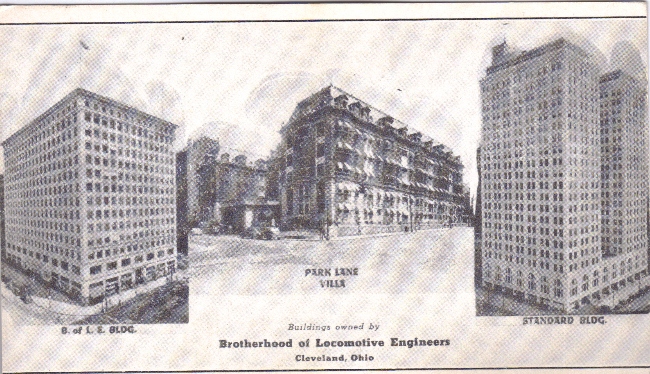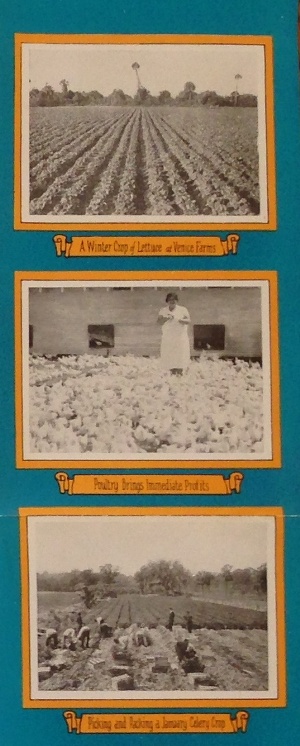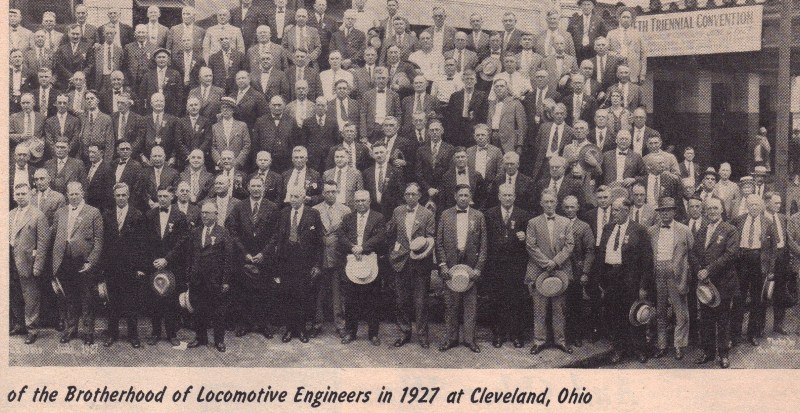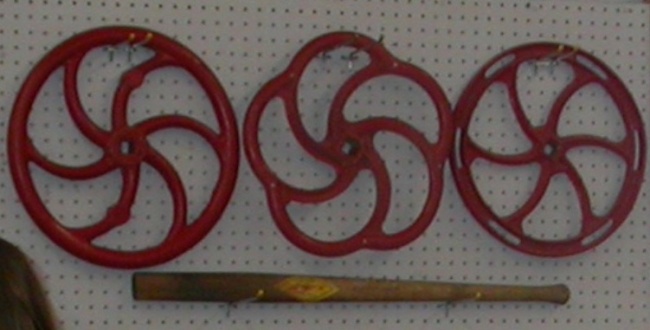
| WWT Shows | CLICK TO: Join and Support Internet Horology Club 185™ | IHC185™ Forums |

|
• Check Out Our... • • TWO Book Offer! • |
Welcome Aboard IHC185™  Internet Horology Club 185
Internet Horology Club 185  IHC185™ Discussion Site Main Page
IHC185™ Discussion Site Main Page  Interesting Horologically Based Stories
Interesting Horologically Based Stories  Larry Buchan's ..."Tales from the Rails"
Larry Buchan's ..."Tales from the Rails"  BofRT ID Tag [Accident - Health Reference]
BofRT ID Tag [Accident - Health Reference]
 Internet Horology Club 185
Internet Horology Club 185  IHC185™ Discussion Site Main Page
IHC185™ Discussion Site Main Page  Interesting Horologically Based Stories
Interesting Horologically Based Stories  Larry Buchan's ..."Tales from the Rails"
Larry Buchan's ..."Tales from the Rails"  BofRT ID Tag [Accident - Health Reference]
BofRT ID Tag [Accident - Health Reference]Page 1 2
Go  | New Topic  | Find-Or-Search  | Notify  | Tools  | Reply to Post  |  |
| Railway Historian IHC Life Member Site Moderator |
Another view  | |||
|
| Railway Historian IHC Life Member Site Moderator |
On this Labor Day holiday. I would like to post some information on the Railroad Brotherhoods The 1920s were pretty heady times for the Railroad Brotherhoods and Orders, during World War I, they were successful in getting the eight hour day, and when the United States Railroad Administration took over all the railroads when the United States entered into World War I, William G McAdoo, while serving as Treasury Secretary under Woodrow Wilson took over the USRA and awarded labor better contracts. They became known as the "Aristocrats of Labor" | |||
|
| Railway Historian IHC Life Member Site Moderator |
The Brotherhood of Locomotive Engineers had built the Engineers Building in Cleveland and decided to go into the banking business, and on November 1, 1920 they opened the first labor cooperative bank on the continent the Brotherhood of Locomotive Engineers Co-operative National Bank., In his speech before the delegates of the B of LE. at their Third Triennial Convention Webb C Ball said about the bank "Here is just one other little thing I would like to tell you about. I have recently made a trip to the Pacific Coast up time service work out there. I was alone with my son, and we had occasion to call on a number of problem banks in Los Angeles, San Francisco and Portland, Oregon, Salt Lake and Omaha. Well, one of the first things when I was introduced as coming from Cleveland, Ohio, was to ask me what about that bank there in Cleveland, Ohio, that the Brotherhood boys, those laboring fellows have started? What about it? Well, then the next thing they wanted to know about was this big consolidation here. Well I told them about not, and I pulled out this little folder Mr. Stone mailed out to me where it showed that the bank had started last November was something like $600,000 and the balance sheet that he sent me shows a gain of over $700,000,000 in practically six months. Well, if you could have heard the astonishment that some of those big bankers express, complementary of what you people had accomplished in six months, you would be surprised. I have commissions from six or seven presidents of the banks to send them one of your five dollar souvenir bills, I had one with me to show them, and I just mention that, among things, I heard a pet name for your bank a few days ago, too, which amused me quite a bit. They called it "The baby whale" (Applause.) In a little while, it will be a big whale." It was after the speech that Webb C. Ball received his Honorary Membership in the Brotherhood of Locomotive Engineers. I have attached a scan one of the five dollar banknotes, from my collection, that Webb C Ball referred to in the speech, they are signed by Warren S Stone, and William B Prenter. | |||
|
| Railway Historian IHC Life Member Site Moderator |
The Brotherhood of Locomotive Engineers had built the Engineers Building in downtown Cleveland. So, across the street on the southwest corner of Ontario Street and St. Clair Avenue, they built a 21 story skyscraper the Standard Building that is still a landmark in downtown Cleveland. This became the home of the Brotherhood of Locomotive Engineers, Cooperative National Bank. They also built the Park Lane Villa condominiums in Cleveland, where they all lived like royalty, and were chauffeured to work every morning. Their next venture was into Florida real estate, where they built the city of Venice, Florida on the West coast, and had big plans for retired engineers to live there in the community, or start a small farm on surrounding acreages, the, President of the Brotherhood of Locomotive Engineers, Warren S Stone boasted that running a bank was as easy as running a peanut stand. Warren S Stone, passed away on June 12, 1925, and left William B Prenter holding the bag when in 1926 when the real estate market in Florida took a nosedive and just about put the organization into bankruptcy.  | |||
|
| Railway Historian IHC Life Member Site Moderator |
The Brotherhood of Locomotive Engineers Real estate assets in Cleveland in 1925.  | |||
|
| Railway Historian IHC Life Member Site Moderator |
Photos of the Venice, Florida real estate misadventures by the Brotherhood of Locomotive Engineers  | |||
|
| Railway Historian IHC Life Member Site Moderator |
Downtown Venice, Florida  | |||
|
| Railway Historian IHC Life Member Site Moderator |
More B of LE Venice, Florida homes, fishing, tennis and golfing.  | |||
|
| Railway Historian IHC Life Member Site Moderator |
More homes and apartments  | |||
|
| Railway Historian IHC Life Member Site Moderator |
B of LE Venice real estate farm lettuce, poultry, celery.  | |||
|
| Railway Historian IHC Life Member Site Moderator |
A letter from January 1927 from the Venice Sales Corporation, offering a sales contract to a B of LE member in New Jersey.  | |||
|
| Railway Historian IHC Life Member Site Moderator |
The Fifth Triennial Convention of the Brotherhood of Locomotive Engineers held in Cleveland from June 6th, to July 21st 1927 was the longest convention ever held by the organization, a book of the proceedings was 2037 pages long.  | |||
|
| Railway Historian IHC Life Member Site Moderator |
Many hard decisions had to be made, the organization was on the brink of bankruptcy with their failed real estate investments in Venice, Florida. A new president was elected. Alvanley Johnston born in Seeley's Bay, Ontario in 1875, his parents were Americans, he attended business college in Ontario. He started his railway career in 1892 working as a call boy for the Great Northern Railway, he worked as a wiper in the railway's shops. In 1897 he was promoted to locomotive engineer on to 1909. From 1909 to 1919 he was the General Chairman for the Great Northern locomotive engineers at the Brotherhood's 2nd Triennial Warren Sanford Stone was elected to the new office of President. William B Prenter became First Vice President in charge of finance. When Warren S Stone died in 1925. William B Prenter became President and Alvanley Johnston became Grand Chief Engineer.  | |||
|
| Railway Historian IHC Life Member Site Moderator |
A meeting of the Brotherhood of Locomotive Engineers Advisory Board on June 18, 1925, William B Prenter President on the left foreground, and Alvanley Johnston Grand Chief Engineer third down on the right-hand side  | |||
|
| Railway Historian IHC Life Member Site Moderator |
At this time the Brotherhood's National Bank was in financial trouble with $1 million in bad investments, before the 91,000 union members found out the executive board decided 30,511 acres of real estate in Venice, Florida, for $4 million and plan to develop it as a popular resort, the project drained valuable resources, in 1927 Prenter was warned by the Brotherhood's lawyers Prenter ignored them. When the Convention convened in Cleveland on June 6, 1927 and the delegates learned of the mismanagement and losses made by Prenter, he, and other members of the advisory board were thrown out and Alvanley Johnston was elected president.  | |||
|
| Railway Historian IHC Life Member Site Moderator |
A recommendation was brought up before the convention to the effect of that loyalty certificates at a value of $100 be issued to each and every member who voluntarily subscribed. If this solution did not bring the sufficient funds, the Grand Chief and the Advisory Board were authorized to levy an assessment. The loyalty certificate was issued for the purpose of securing funds to take care of the obligations of the Organization and to clear up the indebtedness to some extent of the two buildings in Cleveland. The convention ordered that a majority of the Board of Directors of the Co-operative National Bank should be composed of businessmen from Cleveland and that the members of the Advisory Board be removed. However, the Grand Chief was to remain a director of the bank, and chairman of the Financial Committee within the bank.  | |||
|
| Railway Historian IHC Life Member Site Moderator |
Here is a Application Blank clipped from the Locomotive Engineer's Journal from J.H. Repp, a member of Division 380 in Sayre, Pennsylvania, on the Lehigh Valley Railroad. It is for one Loyalty Certificate of $100 to be paid in monthly installments of $5 a month, I have a file folder full of these applications from all over the United States. In Canada that the organization afloat in these troubled times.  | |||
|
| Railway Historian IHC Life Member Site Moderator |
Here is a Loyalty Certificate issued to C.E. McDaniel in 1930.  | |||
|
| Railway Historian IHC Life Member Site Moderator |
Brothers who bought Loyalty Bonds also received a Loyalty pin. | |||
|
| Railway Historian IHC Life Member Site Moderator |
The name Brotherhood of Locomotive Engineers Co-operative National Bank of Cleveland was shortened to Engineers National Bank of Cleveland and was signed by Alvanley Johnston.  | |||
|
| Railway Historian IHC Life Member Site Moderator |
A smaller note with Abraham Lincoln signed by Alvanley Johnston  | |||
|
| Railway Historian IHC Life Member Site Moderator |
Meanwhile the Order of Railway Conductors decided that the winters were too cold in Chicago so they so Savanna architects Wallin and Comer designed the building is built from brick, concrete, and cement. It is 240 feet long, has two wings, and faces westward towards Richardson Creek. It was considered to be nearly fireproof as the only wooden building materials were the doors and trim. It contained 67 bedrooms, twenty-one, on the main floor with the rest upstairs. Each room had a bed, telephone, telephone table, a dresser, a chair, rug, and steam radiator. Entrance into the main building was through the ivory painted main lobby. There were brass lighting fixtures attached to the beam ceiling, and a large staircase painted white and walnut to the second floor. Walking through the first floor residence passed through French doors. The copper screen windows were hung with beautiful draperies. The North wing of the first floor, contained a 400 ft.² dining room and kitchen. The kitchen was very modern, because it featured electrically equipped coffee urns, a toaster, a washing machine, and an ice box. The South wing contained a lounge with wooden panel walls and a fireplace that was surrounded with stones from each state. The first floor also contained a glass enclosed sun porch, the directors room, and the billiard room. There were hospitalization facilities located one of the wings of the second floor. The building cost $350,000 , the equivalent of $4,608,000 today to build a retirement home on Oastland Island in Savannah, Georgia It opened in November 1927, and different from the Highland Park home, which was for men only, the new Conductors home to conductors, their wives, and widows, when it opened 14 conductors from the Highland Park home were moved in immediately. The new home continued to prosper during the 1930s, but in 1940. The occupancy was down to only eleven retired conductors and their spouses, so the home was closed. | |||
|
| Railway Historian IHC Life Member Site Moderator |
Another view of how it looks today.  | |||
|
| Railway Historian IHC Life Member Site Moderator |
Order of Railway Conductors home fireplace  | |||
|
| Railway Historian IHC Life Member Site Moderator |
A photo of the S.E. Association held at the Order of Railway Conductors home at Savanna Georgia August 22, 23, 24 1932  | |||
|
| Railway Historian IHC Life Member Site Moderator |
Next to the old link and pin coupler, the biggest hazard to railroad brakemen was the old stemwinder handbrake's as pictured in front of the old Pillsbury Canada flour mill where I used to work in the 1960s, this old boxcar was built in August 1909, with its wooden sheathed outside and it's underslung steel bracing, where the term "Riding the Rods" came from.  | |||
|
| Railway Historian IHC Life Member Site Moderator |
This end view of the boxcar shows the ladders on the side and end where the brakeman would climb up to apply the handbrake the horizontal wheel on the top, there is a small wooden platform below the brakewheel's shaft where the brakeman would place his foot to engage a ratchet wheel and dog to apply the handbrake, very similar to winding a pocket watch where the click would do the same as the dog. At the bottom of the shaft is a chain that wraps around it and is attached to the underneath brake rigging that pulls the brake shoes towards the wheels. Also visible are the wooden catwalks to cross from car to car these were very treacherous in the winter operations of the railways.  | |||
|
| Railway Historian IHC Life Member Site Moderator |
With the handbrake wheel in the horizontal position, it was difficult to get the leverage needed to apply the handbrake effectively, the solution to this problem was they use of a brake club, made of hickory it resembles a pickax handle, it was placed between the spokes of the brake wheels, and against the square, vertical shaft to get the leverage, the hazard of operating these handbrakes was that when the brakeman kicked the dog back to release a handbrake the recoil with the brake club in place could throw the brakeman off of the boxcar. I have attached a photo from my Museum of three of the old stem wind handbrake wheels, along with a hickory brake club.  | |||
|
| Railway Historian IHC Life Member Site Moderator |
Nothing much changed with railroad handbrakes until the 1930s, when the Ajax vertical handbrake was invented, this was a major improvement. Gone were the ratchet wheel and dog on the foot platform, it was now located behind the vertical brake wheel with a hand lever to release the handbrake safely. There are many changes in this photo I have attached the modern freight boxcar was made of steel, and the steel corrugated running boards were much safer.  | |||
|
| Railway Historian IHC Life Member Site Moderator |
Ajax hand brakes used on tank cars  | |||
|
| Railway Historian IHC Life Member Site Moderator |
Ajax handbrake used on express car  | |||
|
| Railway Historian IHC Life Member Site Moderator |
Old railway boxcars, and tank cars with stem wind handbrakes were not allowed to be used for railway interchange with other carriers, but the companies, like the CPR still used them on their own property, I remember many old crude oil tank cars, and boxcars used for loading coal from Alberta to be shipped to British Columbia. I took this photo back in 1974. I'm riding on top of a string old boxcars going over a wooden truss bridge at East Coulee in the Drumheller Valley, the cars will be spotted at the old Atlas Coal Mine, note the wooden running boards, and some of these cars have the old stem wind handbrakes. .jpg) | |||
|
| Powered by Social Strata | Page 1 2 |
| Your request is being processed... |
|
Welcome Aboard IHC185™  Internet Horology Club 185
Internet Horology Club 185  IHC185™ Discussion Site Main Page
IHC185™ Discussion Site Main Page  Interesting Horologically Based Stories
Interesting Horologically Based Stories  Larry Buchan's ..."Tales from the Rails"
Larry Buchan's ..."Tales from the Rails"  BofRT ID Tag [Accident - Health Reference]
BofRT ID Tag [Accident - Health Reference]
 Internet Horology Club 185
Internet Horology Club 185  IHC185™ Discussion Site Main Page
IHC185™ Discussion Site Main Page  Interesting Horologically Based Stories
Interesting Horologically Based Stories  Larry Buchan's ..."Tales from the Rails"
Larry Buchan's ..."Tales from the Rails"  BofRT ID Tag [Accident - Health Reference]
BofRT ID Tag [Accident - Health Reference]©2002-2025 Internet Horology Club 185™ - Lindell V. Riddle President - All Rights Reserved Worldwide

